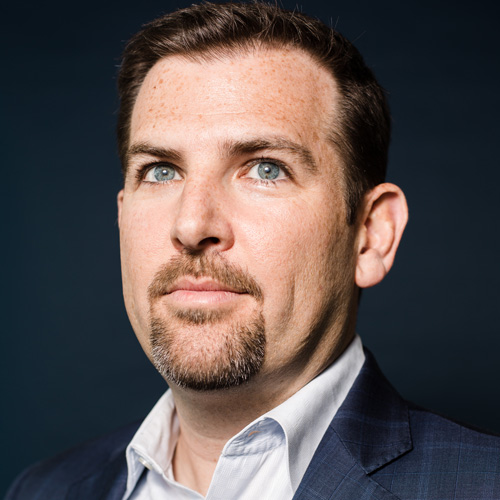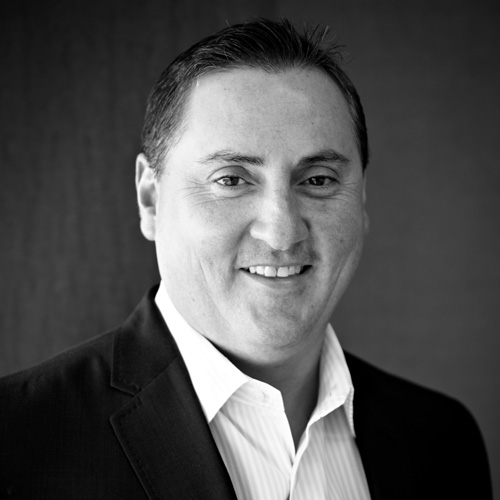As chief people officer and senior vice president at Cisco, Francine Katsoudas is responsible for creating innovative experiences for more than 70,000 employees. Having been in the role for a little more than two years, Katsoudas is transforming human resources at Cisco. She has transitioned HR from a transactional organization to an innovative, strategic partner, working collaboratively throughout the company. Hispanic Executive recently sat down with Katsoudas to discuss her emphasis on a more inclusive culture and the ways in which she is empowering employees with opportunities to learn, develop, take risks, and bring their best selves to work.
Hispanic Executive: Even though you’ve only been in your current role for a couple of years, you’ve been with Cisco for over two decades. How did you hone an expertise in human resources?
Francine Katsoudas: When I started at Cisco twenty years ago, I would not have imagined such an incredibly diverse and rich journey. I began my career at Cisco in the customer contact center, and after a couple of years, I started to move across varied functions—operations, customer service, and business development. It was through these experiences that I learned so much about our business, customers, and opportunities. Working with different leaders and having amazing mentors and sponsors has given me the opportunity to continue to learn, build skills, and solve some really crazy challenges. I now lead HR for Cisco, and my focus is on ensuring that our employees feel their journey is dynamic and rewarding.
How did some of your formative experiences contribute to your success?
Growing up in the Central Valley in California, I was so fortunate to have great role models. My parents worked incredibly hard and pushed me and my siblings to learn, make an impact, try different things. They showed us the importance of building relationships, and my father every day demonstrated through his business how to listen and care for employees. This push and exposure early on provided me with the foundation to always be curious, take risks and step out of my comfort zone.
Even before joining Cisco, you worked in both the financial and professional services industries. Was it difficult to switch to the tech sector?
When I look at transitions, I think a lot of us think they are bigger than they should be. Early in my career, I did, too. I was initially worried about moving into the tech space. Over time, I realized that change is really a mind-set. You can always apply existing skills and experiences to new roles, while also being open to new learnings and development. I have always loved a good challenge and changing roles can be both uncomfortable and humbling. I try to take something away from every experience and apply these learnings to the next thing. Every move—whether a setback or step forward—makes you better.
What led you to eventually decide that HR was the right space for you?
There was a point when I was working in M&A (mergers and acquisitions) at Cisco, which is highly complex, that I had the realization that leadership was the key differentiator for a successful acquisition. Effective roadmaps and integration plans were always accelerated by trust and open communication. I started to experiment and focus on how I showed up to each project and challenge. As I considered my next career move, I realized that the HR function provided an incredible opportunity to bridge business strategy with culture, leadership, and organization. HR was a very new space for me, and it took years to learn the business. I’m still learning. About eight years ago, a former CHRO identified me as a potential successor. At the time, I knew my ambition and goal was to lead HR, and this recognition crystalized my path.
CISCO SYSTEMS HR
During Francine Katsoudas’ two-plus years as SVP and chief people officer, HR has been on a journey of incredible change. Francine and her team are “breaking HR”: moving from a transactional HR to an innovative, strategic partner. She also is driving a more inclusive culture, providing employees with the opportunity to learn, develop, innovate, take risks, and be their best selves as well as be part of the most amazing teams.
What has kept you with Cisco for over two decades?
It’s the culture. Working with amazing people in an environment that supports growth, taking risks, and having impact is very attractive. It is funny—when I first came to Cisco, I showed up at the wrong interview by mistake. Even though I realized it pretty quickly, I thought, ‘I will just go with the discussion.’ The best part was, after the interview, I decided I really wanted the job, and I fought for it.
What about the culture was impressive to you?
When I think about our culture, I see a company that supports its people to be their best selves, that is creating the most amazing teams, and is creating a place where people can continuously learn, follow their passion, and innovate. We are living in such a dynamic time, and there are always going to be highs and lows. We are committed as a company to focus on developing and increasing our employees’ skills and capabilities, so that together we can navigate through the dynamic changes we face and be more effective, innovative, and successful as individuals, as teams, and as a global company.
In my role, and with my leadership team, we have spent time looking at what differentiates us as a company. One of my favorite questions is ‘what does a great day look like at Cisco?’ and then engaging with our employees to make every day a great day.
How have you been able to invest in and impact the culture? What have been some of your strategies throughout your tenure?
Two years ago, we introduced Our People Deal to create the culture we want our employees to experience every day—a culture that will help us move quickly; be agile, innovative, collaborative; and attract and retain the best people. Through Our People Deal, we connect everything, innovate everywhere, and benefit everyone. We have two sides: what Cisco offers employees and what is asked of them in return.
What is so cool about Our People Deal is that it was created by two employees in the UK, and it has continued to evolve by listening and acting on those things that employees say matter. One way we’re bringing Our People Deal to life is through Moments That Matter, those key moments that define an employee’s journey at Cisco. Through employee feedback, we learned that people want to participate in more activities that allow them to innovate, have more choices in the way they recognize others for great work, and spend more time volunteering in their local communities. Our moments focus on development, teams, and personal experiences. They include having your birthday off, enabling employees to offer breakthrough solutions in our Innovate Everywhere Challenge, taking five paid days off to give back in the community, and many others.
How is diversity important to your strategy?
As a company located in more than one hundred countries, we have many unique cultures. It is so important that we recognize the diversity and perspectives of all of our employees in everything we do. We know it is this incredible diversity and our culture of inclusion and collaboration that will fuel our innovation—and we are innovating to create that diverse culture. Some of the things we are focused on include: our pay parity framework to ensure all employees are paid fairly and equitably; Project Life Changer, where we are using Cisco technology to make it possible for differently abled workers to perform at their best; a program management office that is devoted to advocacy and social justice to support our people inside and outside of the workplace; and an increased focus on the power of teams which represent a wide range of backgrounds, experiences, affinities, and points of view. This is what Our People Deal is all about—creating an environment where all employees can thrive.
What are you focused on at the beginning of 2017?
We are living in dynamic times and it requires us to think and work differently in this new digital world. In 2017, I am focused on three major things:
- Creating a culture where employees can experience one company, many careers through job changes, continuous skills development, and stretch assignments
- Building the best teams and creating an environment of safety and trust, which will enable innovation
- Continuing to move to “one size fits one” offerings so employees can create and experience their own journey

